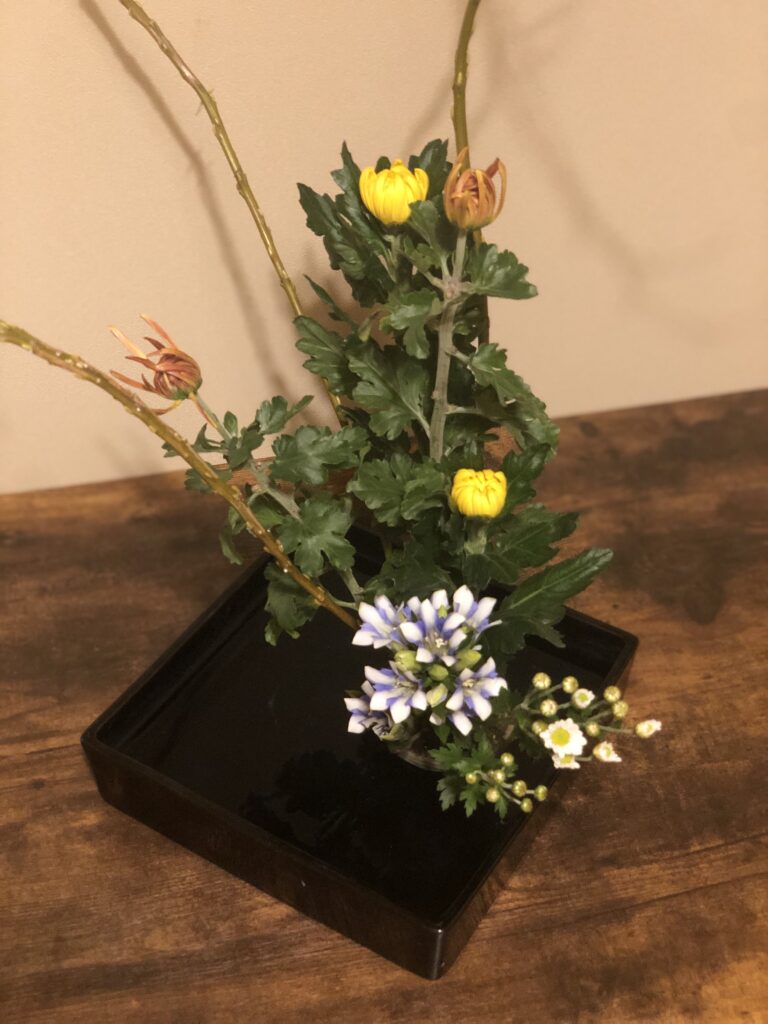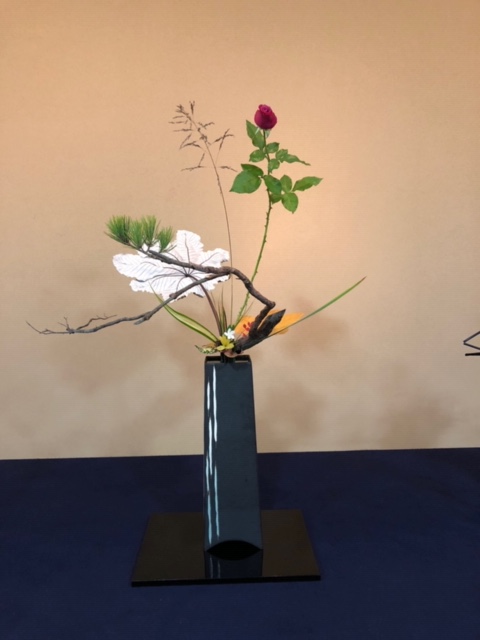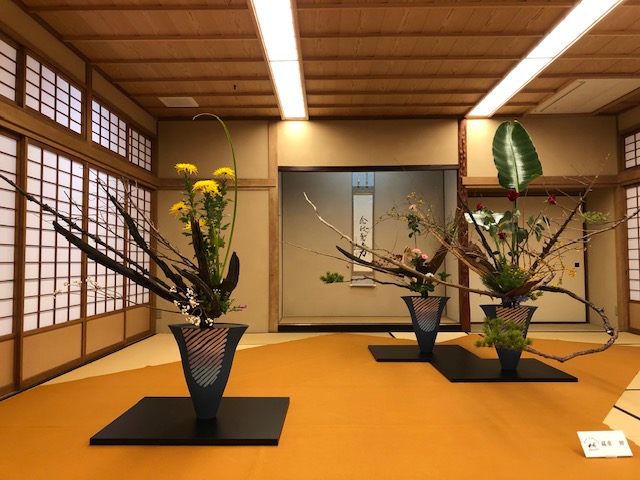A Glimpse into the Teaching Style of a Master
This article originally appeared in the March 2023 issue of CONNECT.
Nobu Kurashige (Yamaguchi) interviewed by Sydney Michael (Yamaguchi)
I’ve admired traditional Japanese arts for a while, and when I had a chance encounter with a highly accomplished Ikebana master last year and she offered to teach me, I was beyond elated to start. I want to share with you all not just the love of flowers and ikebana that I have, but a bit of my wonderful sensei, Nobu Kurashige. This is a collection of some of our conversations.
Flowers are beautiful and they have their own lives, so when you cut from nature, you have to show your appreciation.
“I was born into an ikebana family,” she started. “My mother was a tea ceremony and ikebana master, so I was brought up around it. She arranged ikebana all around our house. Everyday, everywhere, I enjoyed flowers. It was my normal.”
“I’ve also always enjoyed plants, flowers, and greenery. When I was a child, we would go as a family into the mountains.” She paused, thinking for a moment.
“My father used to tell me that there were gods in the mountains. He never discouraged me from taking flowers and branches, but taught me to cut from the sides and not the top, so they wouldn’t die and could continue to grow.” Her voice softened. “My father always said flowers are beautiful and they have their own lives, so when you cut from nature, you have to show your appreciation.”
She smiled. “You have to thank them as you use them. It was a very good lesson.”

When Kurashige-sensei was showing me some photographs of her arrangements at the Tokyo National Museum and the Tokyo Olympics, I was shocked by their elegance and beauty. She said, “You know, I’ve been studying ikebana for around 40 years, but I didn’t start until I was an adult.”
“After my husband and I got married and we moved to New York, our neighbor was an Italian florist. He had asked me about Japanese flowers, and I was ashamed of myself, because despite my upbringing, I couldn’t tell him much of anything.”
“It was moving to the US that made me realize that I’m Japanese. Those 10 years in the states, separated from my culture, made me feel more connected to it than I ever had in Japan. It. . .” she thought, lowering the pictures still in her hands. “It almost felt like my duty to study my own culture. Being so steeped in something means that you never have a chance to see it clearly from the outside.”
“I’m so grateful that I went to America,” she said, setting down the pictures and picking up a branch, “not only because of everyone I met and everything I was able to do while I lived there, but because that experience has helped me to learn about myself and carry that knowledge into the rest of my life.”

“Sydney,” Kurashige-sensei called to me as I walked into the room, “Do you know what kind of plant this is?” Seeing my blank face and slight shake of my head, she said, “It’s called ‘nanten’ in Japanese, written with the characters for south (南) and heavens (天). Today, I want you to use these in your arrangement.”
As I struggled to cut down the branch and decide on which angle to place it, she took it out of my hands and, cutting one bunch into two, pointed towards the front and middle of my piece.
“When I lived in Peru, I met a man who was from Hiroshima. He even spoke in the Hiroshima dialect. He raised flowers, and he gave me a sprig of nanten and begged me to use it in one of my arrangements.” She shook her head fondly and handed me more of the red, dotted berries. “I laughed at him. It was a pitiful little plant, and I had no desire to incorporate it into an arrangement. But then, he told me a story. He explained that nanten, though written a different way for the name of the flower, could also be written with the characters for difficult (難) and turning around (転). It’s important to take those difficult struggles in our lives and do what’s in our power to make it better. Even if other people don’t see the beauty in it, we can look at what became of those struggles and be proud of how we did our best to make it into a better situation.”
“He told me that while there are many ikebana teachers, there are not many true masters. Flowers have meaning, they have their own character and history, and I thought then that I want to become a teacher that can share that side of flowers, too.”
She sent me home with an extra bunch of nanten that day.
Don’t just pay attention to the size and the color of the biggest, grandest blooms. Look at how they grow.
When I called Kurashige-sensei the other day to ask if I could write about her, I asked if she had any advice, or anything she wanted to tell the readers. She said, “Please tell them. . . to show love to the flowers around them. ‘I want water.’ ‘I love this sunlight.’ ‘This breeze is too strong.’ They are talking, but we don’t listen. Don’t just pay attention to the size and the color of the biggest, grandest blooms. Look at how they grow. Notice the small buds on the ground as you walk to work each day. If you can learn to love and listen to the flowers around you, you can learn to talk to the flowers too.”
“We can all learn a lot from flowers.”
Sydney Michael is a first-year CIR, fourth-year JET in Yamaguchi Prefecture. She got her undergraduate degree in Asian Languages and Literatures. Currently, her favorite flower is the Lily of the Valley, though this is bound to change.
Nobu Kurashige is a Kado Iemoto Ikenobo Soukatoku, the highest class qualification in Ikenobo Ikebana. She was also the Head of Professors of Ikebana at Ikenobo College. She has travelled the world teaching and exhibiting ikebana, and she wants to share the beauty of flowers with the next generation.




